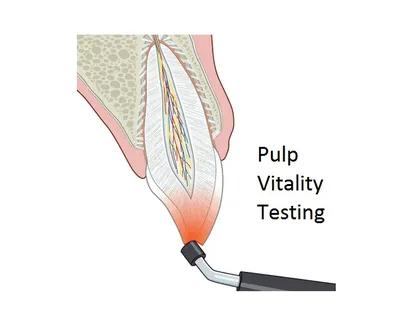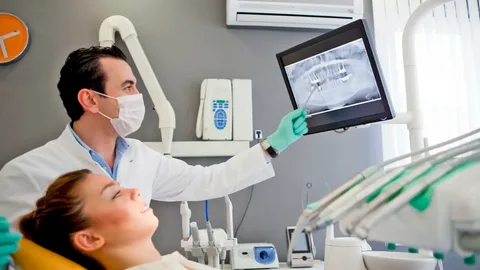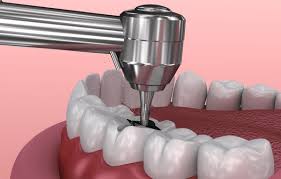Pulp Capping
Pulp capping is a dental procedure aimed at preserving the health and vitality of the dental pulp when it has been exposed or is at risk of being exposed due to tooth decay, trauma, or other injuries. It serves as a minimally invasive treatment that prevents the need for more extensive procedures, such as root canals, by protecting the pulp and allowing it to heal.
Understanding the Dental Pulp
The dental pulp is the soft tissue inside the tooth that contains nerves, blood vessels, and connective tissue. It plays a crucial role in the development and nourishment of the tooth. However, when the pulp becomes exposed or inflamed, it is vulnerable to infection and may lose its ability to sustain the tooth.
Types of Pulp Capping
There are two main types of pulp capping: direct pulp capping and indirect pulp capping. The choice between the two depends on the extent of pulp exposure and the condition of the tooth.
1. Direct Pulp Capping
This procedure is performed when the dental pulp has been directly exposed due to injury, decay, or accidental exposure during cavity preparation.
- Purpose: To seal the exposed pulp and promote healing by forming a protective barrier.
- Materials Used: Calcium hydroxide, mineral trioxide aggregate (MTA), or bioceramic materials are commonly used because they encourage the formation of reparative dentin.
- Procedure Steps:
- The dentist cleans the area to remove any debris or bacteria.
- A biocompatible material is placed directly over the exposed pulp.
- The tooth is restored with a permanent filling or crown to seal the area.
- Ideal Candidates: Patients with healthy pulp tissue and no signs of infection or abscess.
2. Indirect Pulp Capping
This is done when the pulp is not directly exposed but is at risk due to deep decay that comes very close to the pulp.
- Purpose: To remove most of the decayed tissue while leaving a thin layer of affected dentin to avoid pulp exposure.
- Materials Used: The same materials as in direct pulp capping, such as calcium hydroxide or MTA, are used to create a protective barrier.
- Procedure Steps:
- The dentist carefully removes the decayed dentin, leaving a thin layer to avoid exposing the pulp.
- A protective material is placed over the remaining dentin.
- The cavity is filled with a temporary or permanent restoration.
- Ideal Candidates: Patients with deep cavities but no signs of pulp exposure or severe inflammation.
Indications for Pulp Capping
Pulp capping is recommended in the following cases:
- Teeth with minimal to moderate pulp exposure.
- Vital teeth with no symptoms of irreversible pulpitis or infection.
- Teeth with normal radiographic findings, showing no abscess or periapical pathology.
- As a preventive step during cavity preparations where pulp exposure is likely.
Contraindications
Pulp capping is not suitable in the following situations:
- Teeth with irreversible pulpitis or necrotic pulp.
- Presence of abscesses or swelling.
- Extensive decay that has compromised the structural integrity of the tooth.
- Patients with poor oral hygiene or those unlikely to maintain follow-up appointments.
Materials Used in Pulp Capping
The success of pulp capping largely depends on the materials used. Common materials include:
Calcium Hydroxide:
- Stimulates the formation of reparative dentin.
- Antibacterial properties.
- However, it has low compressive strength and may degrade over time.
Mineral Trioxide Aggregate (MTA):
- Excellent sealing properties.
- Biocompatible and promotes dentin formation.
- More expensive compared to calcium hydroxide.
Bioceramic Materials:
- Newer materials with improved sealing and biocompatibility.
- Long-lasting and promotes natural healing.
Glass Ionomer Cement (GIC):
- Sometimes used as a liner for indirect pulp capping.
Benefits of Pulp Capping
- Preserves the natural tooth and pulp vitality.
- Avoids the need for root canal treatment, which is more invasive and costly.
- Promotes natural healing and the formation of reparative dentin.
- Minimally invasive, allowing for a faster procedure and recovery.
Key Feature about Pulp capping

Preservation of Pulp Vitality

Minimally Invasive Approach

Use of Advanced Biocompatible Materials
Frequently asked questions
Here are descriptions for FAQs about Pulp capping to provide a clear understanding:
Pulp capping is a dental procedure used to protect the dental pulp (soft tissue inside the tooth) when it is exposed or nearly exposed due to decay or injury. It aims to preserve the pulp’s vitality and promote healing.
There are two types:
- Direct Pulp Capping: Used when the pulp is directly exposed. A protective material is placed over the pulp.
- Indirect Pulp Capping: Performed when decay is close to the pulp, but there’s no direct exposure. The decay is partially removed, and a protective layer is applied.
Pulp capping is recommended for:
- Teeth with healthy pulp despite deep decay or trauma.
- Situations where the pulp is exposed during cavity preparation or dental trauma.
- Teeth with no signs of infection or irreversible damage.
Common materials include:
- Calcium Hydroxide: Stimulates dentin formation and prevents bacterial growth.
- Mineral Trioxide Aggregate (MTA): Offers excellent sealing and biocompatibility.
- Bioceramics: Advanced materials that promote healing and provide a strong seal.
No, pulp capping is performed under local anesthesia, ensuring the procedure is painless. Mild sensitivity may occur after the treatment, but it usually resolves quickly.

